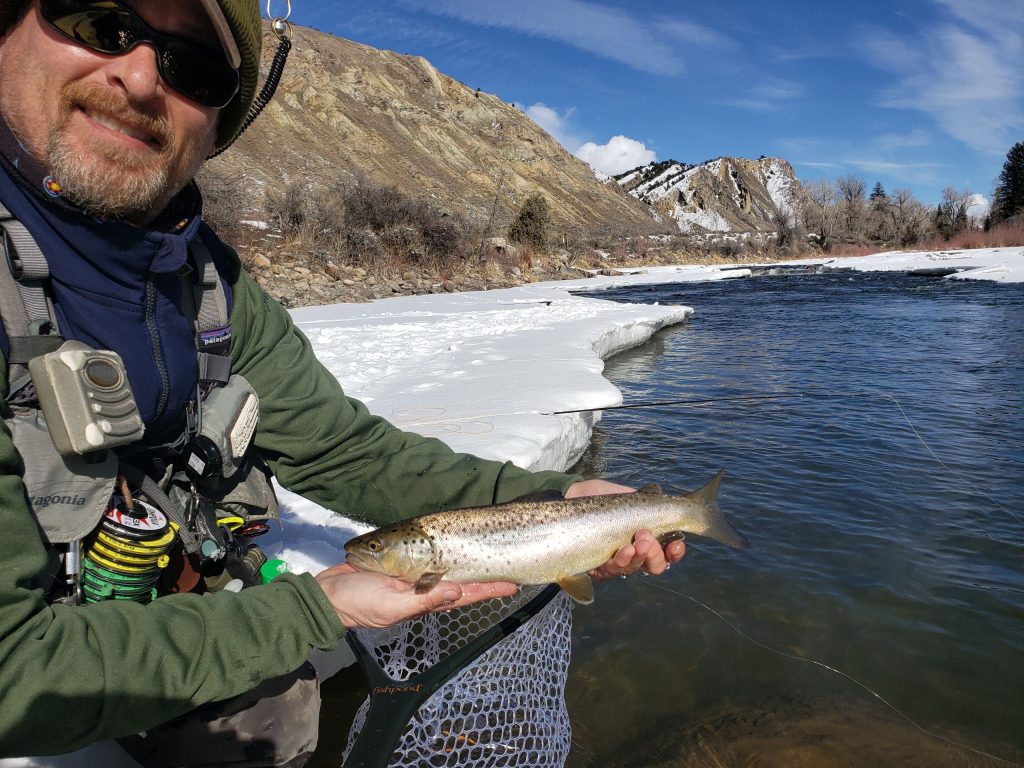Salomone: Pieces of the river — riffle, run and pool
It's important to have a firm grasp of angling terminology

Michael Salomone/Courtesy photo
While fishing on a nearby tailwater with an angling friend, we discussed the lack of angling competition at an often crowded area. He had never been to the well-known location. Surprisingly, we had the whole pool to ourselves.
After some discussion, we decided starting at the tailout would be the best approach. I started walking downstream to the area we mentioned only to realize my friend was walking the opposite direction. I called back to him, “At the tailout.”

He promptly pointed to the top of the pool where the water entered from the riffle above. This caused me to ponder how many times have I taken for granted whether angling friends or clients have understood my terminology. Without some common basic angling knowledge, my instructions, guidance and directions all seem out of whack. Simple things such as common river structures possess foreign associations if not clearly defined.
It happens with a high degree of regularity when guiding. I take for granted that my clients comprehend the process and procedure I convey. If there is a lack of understanding, my instructions seem misguided and irrelevant. Establishing a common language and clear perception of expectations improves the guided experience. What guides in the Rockies call a tailout may mean something totally different in other parts of the country. But it shouldn’t.
Rivers and streams are constructed of the same common components. Size is the biggest difference between the two, but the same basic structures repeat throughout their course. Fast water, either riffle or rapid, pinches tight and broadens where currents diminish forming pools. Pools have definitive characteristics that are easy to read once anglers develop some river sense. The components that make up a pool have well defined and properly named sections.

Support Local Journalism

A riffle is an understood term for angler and non-anglers alike. Riffles are fast-moving water where the river or stream passes over the rocky river bottom at an increased pace. As the riffle ends, it scours out what is referred to as a lip, where depth increases dramatically. Riffles are often called rapids — and depending on time of year, they can be.
Runs are swift water which follows the depth of the main river channel. Often located before entering a broad pool, runs dissipate river-water speed before dropping into a deep pool.
Pools hold certain components that anglers use to their advantage. Side eddies create resting pockets for multiple trout. The eddies gather food in an easy to recognize location. Fish move into position to intercept food caught in the circulation created by the eddie current. Eddies are often positioned on both sides of the river.
Current-breaking obstructions cause river eddies as well. Any upstream eddie current will hold fish looking for sustenance. Eddie currents allow trout to surf softer water out of the main river flow.
Deep water in pools provides a sanctuary for trout. Depth allows fish to avoid tumultuous currents by dropping below the strength of the push. Fish get underneath the main water flow, down where depth slows the river progression. The fish allow the heavy current to pass over them. Same as at the lip, fish ride the slower water near the bottom.

As the river passes through the pool, it grows more shallow. Then, it picks up pace before entering the next riffle, run and pool pattern. This area where water gathers speed is the tailout section of a pool. Tailouts often hold feeding fish exploiting the adult stage of a hatch. The long, slower pool and upstream flowing eddies give insects time to emerge. Adult stage insects are picked off the surface as the river current gains speed above the next riffle.
The lip below a riffle holds fish waiting on nymphs that were knocked loose in the rough water. Stoneflies and heavy caddis nymphs target this area well. Streamers are another choice for the lip and down into the run. Fish are sitting in ambush positions in the run, making streamers a good choice. Nymph rigs work well in eddies and the deep area of the pool. Emergers and dry flies are smart selections in the tailout.
Common river language eliminates confusion when fishing with new anglers. Establishing proper terminology for frequently encountered river structures makes individuals better anglers. Understanding the components that comprise a section of the river steers anglers into the correct position and with the right flies to obtain success.










